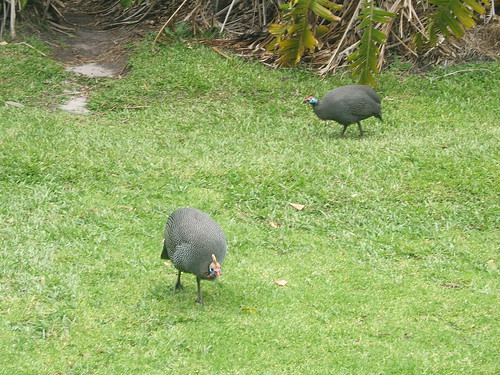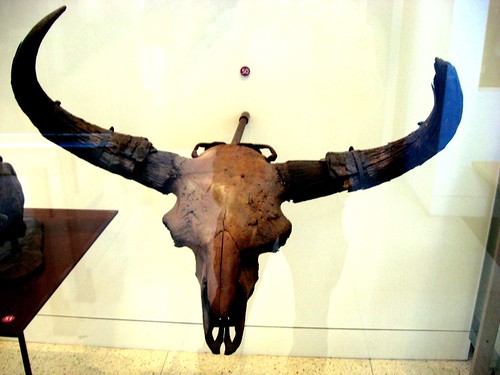South African Guinea Fowl: delicious and trouble free
Julie Zickerfoose recently posted on her excellent blog about a large herd of bison; one of the very species it is suggested we should be restoring for a natural north American ecosystem. the north American bison has evolved in conjunction with north America's grasses and other plants for thousands of years, inevitably it performs better at grazing those plants than the imported domestic cow. Bison of course would be present in their millions in a truly natural America as would their predators and these together would through their effects on the landscape shape the natural environment. Practically we are unable to restore this situation and as addressed previously natural levels of wild megapredators may be unacceptable. However consistent human harvesting could with careful management keep a reintroduced bison herd to scale as it followed a natural migration and ultimately it could provide a lot of food in a manner more in tune with the environment than modern ranching. If a huge national herd of bison seems to far away consider North America's huge national herd of white-tailed deer - a species that is massively overpopulated is damaging natural lands and is delicious.Bison latifrons, an extinct relative of the modern, delicious american bison
On a smaller scale Joel Salatin's farm models the effects and natural behaviours of a number of animal species to produce massive amounts of protein from a small area of land in a manner described as beyond organic. Salatin moves cattle across grass and follows up with turkeys and chickens and rabbits and pigs from time to time in a carefully controlled order. This intensely managed system actually reflects a number of natural behaviours. The birds behave in a similar manner to cattle egrets and guinea fowl - grazing both grass and the insects that follow the cattle. Prairie dogs have been proven to increase grass production so perhaps rabbits can do the same by eating in a different way to the cattle. Salatin's model is allowing him to produce food sustainably and effectively without damaging his most valuable asset- his land. Of course Salatin's cows are unlike the vast majority in the US in that they get to do the most natural thing of all - eat grass. Non-pasture raised herbivores must rank as one of the most obviously unnatural food types in the world and yet now pasture-raised is, bizarrely, a premium product.
Meanwhile the only really wild food most of us eat is seafood like the tuna above - which is proving utterly unsustainable for the most part (with a few worthy exceptions).
The days when natural ecosystem can provide enough food to sustain humanity are sadly long gone. I fear the days when our industry can do the same are shortlived. Perhaps by injecting more natural understanding and complex multispecies systems into our industrial food system we can make it work.
For more on what I've been calling "natural food" I recommend reading "The Omnivores Dilemma" by Michael Pollan, anything written by Hugh Fearnley Whittingstall (both his print books and online columns with the Guardian, Independent and Observer) and regularly visiting the Ethicurean.



No comments:
Post a Comment